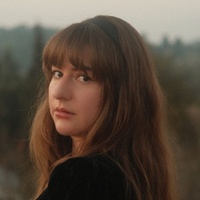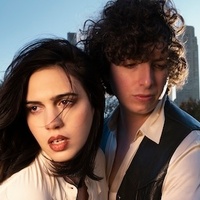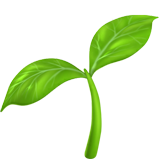On creative resilience
Prelude
Leah Thomas is an award-winning environmentalist based in Los Angeles. A passionate advocate for the often-overlooked connection between social justice, environmentalism, and culture, she founded Intersectional Environmentalist, a groundbreaking non-profit and resource hub, where she currently serves as a board member. She has also lent her expertise as a climate solutions consultant for major companies like Apple. In 2024, she founded Green Girl Productions, producing meaningful cultural and community events across the country. As a leading voice in the environmental space, Leah understands how to enact tangible change on a community and societal level by making environmentalism both digestible and accessible. Her bestselling book, The Intersectional Environmentalist: How to Dismantle Systems of Oppression to Protect People + Planet, is taught in university classrooms nationwide. Recognized on Forbes’ 30 Under 30 List and TIME100 NEXT, Leah is an established public speaker who has presented on prestigious stages including Dreamforce, TED, and Aspen Ideas.
Conversation
On creative resilience
Environmental author and third space organizer Leah Thomas discusses self-sustainability, crafting as a healing practice, and building community beyond digital platforms
As told to Sammy Steiner, 2297 words.
Tags: Writing, Activism, Income, Promotion, Money, Mental health, Inspiration.
What personal pillars are guiding you right now?
I would say crafting, radical imagination (as usual), and self-sustainability—making sure people are well within and sustaining themselves, which is different from the past.
What initially drew you to crafting?
I was entering my late 20s, single, and I was like, “You know what? I got to shake some stuff up.” So, I took a painting class and a ceramics class. It was just so nice to play. I was also experiencing writer’s block at the time—thinking about my second book. I wrote multiple proposals and they kept getting rejected. I really felt like I needed to just get creative to find myself. It made me feel like I was healing in a lot of ways. I feel like I was able to get through certain problems because I had this creative outlet—that’s been something I’ve wanted to share.
What is your go-to material language right now?
I like doing things with plants—a lot of floral dyeing and learning how to treat clothing so it receives plant color better. I’m also experimenting with learning how to make plant-based milks and things like that. Ceramics have also been so lovely.
What is the value add for you, personally, when it comes to crafting in community?
I want more friends. I have so many amazing, incredible friends that also have platforms, and I think it’s just connecting me to random people. I’m an introverted person but there’s a need that I have to get grounded, get back down to earth, and talk to people about their interests. It’s bringing me a lot of joy—getting grassroots. I feel really lucky that when I was building my platform, I got to just say whatever I wanted and people would listen. I’m like, “Why are you listening to me? I’m 25.” Now that I am older, I want to listen and learn from other people.
What have you learned about people from hosting events?
There’s such a need for third spaces. There was a wave in 2020, when I was really platformed on Instagram, where people were just wanting to be educated about everything from anti-racism to environmental justice. There was so much happening online because of the pandemic. I’ve realized from the craft club that so many people would like to do activities or mindfulness exercises… not only that, but do it with other people. There’s a need to be in community. It also just showed me that there are so many amazing crafters out there. Every event I go to, I basically meet the instructor of the next crafting club that I host. It’s introducing me to the topic of skill sharing, and how that’s really important for building resilient communities that aren’t reliant on huge corporations. It’s teaching me a lot about the importance of third spaces, the importance of learning how to skillshare, and learning these skills in community.
What is making craft club gatherings meaningful or transformative?
A lot of the work that I do is activism-adjacent at times—sustainability is either overtly or not so overtly infused into it. A lot of spaces that are about social good, understandably, can also be incredibly intense. I’ve been spending a lot of time researching Black feminist scholars and learning about radical activism in the ’60s and ’70s. There was always some sort of complimentary offering to the radical work. I want to show people that you can be interested in sustainability, or even activism, but you can also connect in those spaces over things that contribute to the wellbeing of the community. I’m learning that these kinds of complimentary third spaces are needed to support the work that people are doing to try to make a better world. Teaching people that self-care is not just bubble baths—I mean, it can be, but it can also be the radical act of being in community. I feel like a lot of movement spaces are starting to mirror capitalism by overworking people, bombarding them with information, and basically making them feel like they’re a cog in the machine—the very thing they’re trying to resist. That doesn’t feel right. We don’t also want to burn people out through activism. I’m trying to have something that actually resists capitalism, and those systems that say that we can’t rest, by showing people the importance of resting and being creative with one another.
You’re holding the intimacy of crafting alongside the scale of larger environmental issues. I’m curious how your crafting practice informs the way you think about waste and material?
I just did a workshop where people were making fruit syrups and learning how easy it can actually be. All the fruit was essentially farmer’s market waste from this really cool group called Anomaly Coffee Lab—they’re a waste reductive coffee, food, and cocktail lab. It’s cool to be able to work with people like them. It’s been a really nice way to reconnect with sustainability and infuse it into the programming without it being overt. I don’t necessarily market the craft club as an environmental club, but then people are making necklaces with beads made out of recycled glass found on the beach, and they’re learning those lessons in another way—how to repurpose things.
Do you consider crafting a form of activism?
Yes. Craftivism is the new wave. I’m going to make a video about it. I also want to help contextualize why I’m crafting for people who might be confused.
I love that term—you also coined the term intersectional environmentalism. What does intersectionality look like to you in everyday life?
It really does flow throughout the way that I interact with people—understanding that you really never know what someone’s going through or what their family life is like. Intersectionality, or intersectional thinking, just encourages me to tap into empathy a little bit more and understand that even with all of these differences, we are so alike in a lot of ways. I just know that multiple truths can exist at once. I think I know that because of intersectionality—because people’s identities are incredibly complex and layered, and to lean into empathy, not generalizations.
What was it like to write your first book proposal for The Intersectional Environmentalist, and has your crafting practice helped shape or influence your creative voice for your second proposal?
I feel like I didn’t realize that crafting was actually this meditative practice that was helping me feel a lot more confident in myself—especially hand building with ceramics. It’s just you, your hands, clay, and water making whatever you want to make. You can’t be a perfectionist. It’s teaching me about letting go of perfection, and then also getting something beautiful. I love my hand-built pieces even more because they’re all uniquely different. I just love that it’s like infusing bits and pieces of my personality into the work. I think that flows into how I’m approaching my second book proposal.
My first book was an intro to environmental justice, and only the introduction was written in first person. The rest of it is primarily data, and it’s used mostly in a classroom setting. With this book, I’m like, “No, I actually want to write in first person, infuse my personal story, and have more conversation.” My crafting practice has informed my writing a bit by teaching me to take up space—and then also teaching me to be okay with introducing myself into the work that I’m doing. For the last couple of years, I felt like the work I was doing was to represent a movement—to represent the environmental justice movement, and help people really understand the connections between social issues and environmentalism. Things are unfortunately ricocheting and changing right now. It got me thinking, “What do I want to do?” I want to introduce people to me, Leah—not just as an intersectional environmentalist, but as a person who’s doing all these other things and activism is just part of my interests—which I feel incredibly privileged to do. That’s a cool question because it made me realize how those two things did go together and inform my writing.
Can you share any themes you’re exploring in your second book?
It’s all about why we refer to the Earth as Mother Earth. I also love sci-fi, fantasy, and folklore, so the book is going to have a lot of that in it. I’m really leaning into ecofeminism lately, and how the treatment of women and the planet go hand in hand. I’m excited to just explore what an ecofeminist manifesto could look like. I’m going to be interviewing so many incredible researchers, musicians, and random people.
Are there any authors inspiring you right now?
Amanda Montell is one of my favorite writers. She wrote the book Cultish, The Magical Age of Overthinking, and she also has a podcast called Sounds Like A Cult. She’s a linguist, and is just one of the funniest people. I’m learning a lot from her writing—how she infuses her personality, and also includes pop culture references, which I find really inspiring.
Has anything surprised you about being a published author since The Intersectional Environmentalist came out?
It’s been out for a while, but I think it’s the fact that people are still reading it. I think something that surprised me is that I don’t resonate with the book anymore. Even the other day I was like, “What was I talking about?” I wonder if musicians ever feel that way… because, wow, I really had a lot to say. There’s a cognitive dissonance, or a separation, between the work and where I am as a person. That surprised me the most. I’m also still shocked that the book is being used in classrooms. That feels really good.
Cognitive dissonance is very real—especially when something becomes public. It can take on a life of its own and still be attached to you, even if you’ve grown beyond it. Social media can magnify that too. How have you been interacting with social media lately? Has your relationship with it shifted over the past five years, especially since becoming platformed in 2020?
I’m starting to showcase more bits and pieces of myself. I think when I started Intersectional Environmentalist, I really wanted that to be an educational platform, and then my personal platform could be a blog where I post whatever I want. I’ve started to embrace that more recently by sharing crafts. I realize that I am going to build a new audience of people and there are going to be some people who are like, “No, we want you to educate us on every possible system we need to dismantle.” I just don’t have it in me. I’ve had to really use Instagram like Pinterest in some ways. I’m still always going to share certain thoughts about social justice because that’s a part of who I am, but I think I’ve developed a healthier relationship with it. I don’t think I would be able to sustain myself if my presence on social media was educating people solely about all of the trauma that’s happening to the planet and people right now—it’s heartbreaking—and people are already being bombarded with that information.
I’m trying to experiment with how I can be a positive light in the midst of all of this chaos—not in a way that’s toxically positive. There are people online that think you don’t care if you’re not sharing this, or doing this. I want to show people that you can care, and because you care, you can give that care out to other people by posting things that hopefully make people feel a little tiny moment of joy, or feel held and connected.
How do you balance protecting your creative voice while navigating the demands for output on social media?
I started posting on TikTok more because you don’t have to be as serious—I just have hot takes and no makeup on. I’m still talking about the same things, but it just feels like there’s a little less pressure. I’m going to develop a Substack, which feels really fun. I’m also just grappling with the fact that social media is also my job to a certain extent. My dream is to be a professor, but right now some of my income is tied to my social media. I wouldn’t feel genuine if I didn’t admit that part of the reason I’m sharing is because I need to support myself as an artist. If I can post about craft club, and there’s a brand that wants to sponsor craft club, then there’s more crafts for the people. That feels like a worthy way to use my platform and redistribute money. In some ways, I do feel like I am playing the game when it comes to social media.
What do you wish your younger self knew?
I feel like I took a lot of things really personally when I was younger—I wanted everybody to like me. Then I just realized that with some people, it’s really not about you. Just show up the best that you can because social media is not the end all, be all. It’s crazy how this journey has taken me back to getting offline. You can still use it as a job, but it’s more important to touch grass, be in community with real people, and grassroots organizations. Some people are just meanies—let them be mean and move on.
Leah Thomas recommends:
SAYA, the album by Saya Gray
Cultish, by Amanda Montell
Good Earth, sweet & spicy tea
Moonstruck, the movie
- Name
- Leah Thomas
- Vocation
- author, organizer
Some Things
Pagination



